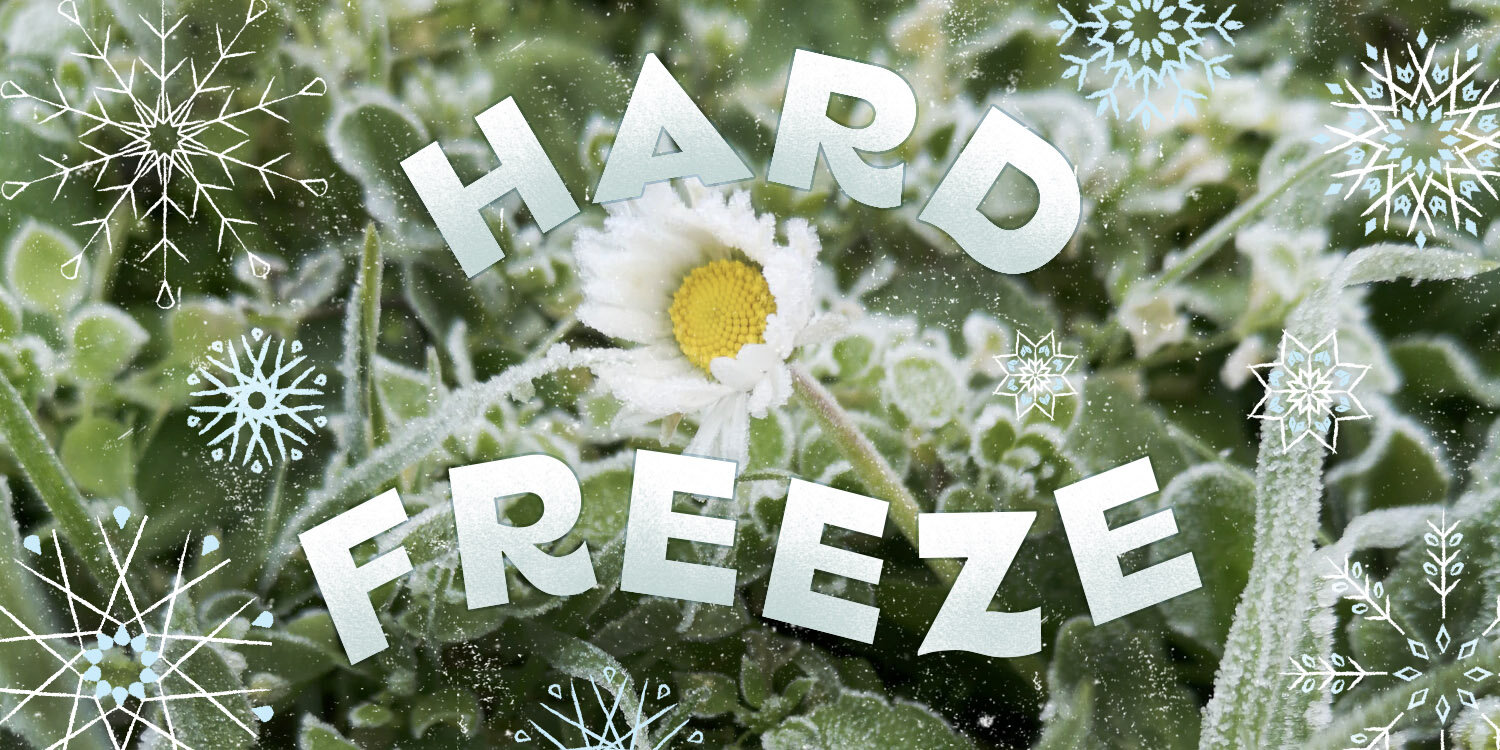Frost-Proof Your Garden: The Chill Guide to Plant Protection
A frost occurs when air temperatures drop to 32º for a few hours or long enough to visibly freeze the water dew. A freeze occurs when temps go there for a longer amount of time, causing more of a danger to plants. Finally, a hard freeze occurs when temps fall to 28º or lower. These are actual temperatures as plants, unlike gardeners, cannot feel wind chill.Protecting the roots of your plants is essential to their survival. Do so with a deep watering before the freeze and then covering vulnerable plants. Ensure your frost cloth is fully tucked in at ground level. Secure from wind with stakes or something heavy like bricks or rocks. Trap the ground heat in around your plant.
Bring anything in pots indoors.
My appreciation for fabric grow bags always deepens when I can move the crops planted in them easily into the garage or the greenhouse.
Harvest what you can beforehand.
Harvest everything you can eat or give away. Cut your blooming flowers, like snapdragons & calendula, and bring them inside for an arrangement.
Water everything deeply at ground level.
The water will help keep the roots warmer below. Even in extreme cold, if its roots survive, your plant has a fighting chance. My sagos were seemingly destroyed in 2021 but, six months later, started to regrow as the roots slowly recovered. Make sure not to leave water in the hose and store it somewhere where it won’t freeze and burst. If the freeze is ongoing like in 2021, try to water plants with warm water at points throughout, it may make a huge difference.
Double up your protection efforts.
Add leaf mulch, pine straw, or something similar to tuck in your plants before covering them with the blankets. Make sure the blankets aren’t touching the plants by putting up tomato cages or something similar to tent the blankets.
Upgrade your frost protection.
That thrift store sheet may have done the trick in a light frost but won’t help much when temps are in the single digits. Make sure the protection goes all the way to the ground and is secured with pins or rocks. You’re trying to make a little warm bubble and the heat is coming from below. The ground is much warmer than the air.
Improvise.
Use whatever you have to provide added protection. An overturned trashcan, cardboard boxes, empty plastic bins, large felt grow bags, tarps, even bubble wrap is better than nothing. Keep any plastic from actually touching the plants if you can. If you have old-fashioned, incandescent Christmas lights they can provide a few degrees of warmth when strung among your plants.
Prioritize.
2021 taught us that sagos, rosemary, and loquats are vulnerable to ongoing zero temps. Make sure to water them deeply. What annuals have you invested your time, energy, and money in that hasn’t yet been realized? For me, that’s usually my ranunculus. Make sure to cover them.
These sago fronds turned brown and fell off after the 2021 storm. They would look like dead, ugly stumps for six months afterward and take almost three years to fully recover from the persistent freeze. A deeper pre-freeze watering would have helped them fare better.
Loquats went from being a safe fruit tree to plant in Austin to one that is a risky bet. Over half of the loquats in my neighborhood died in 2021, and the survivors still struggle. Their former tropical lushness is now yellowed and often fruitless.
Really worried? Double up on protection. Frost cloth + plastic sheet = super shield.
Know which plants need the most protection: The plants most likely to make it (cold hardiness around 10º-12º): collards, radishes (even if their green tops die, they may grow back from the root), spinach, Swiss chard, beets, cauliflower, carrots, turnips, arugula, kale, leeks, mustard, parsnip, chives, parsley, and garlic. The next tier of cold hardiness (around 20º): Brussels, cabbage, broccoli, pansies, dill, fennel, snapdragons, California poppies, and lettuce. The most vulnerable crops are nasturtiums, peas, sweet peas, cilantro, calendula, borage, poppies, and aloe vera. Rosemary will die if unprotected in zero temps for multiple days.
Make peace with the outcome. If the storm brings rain and snow, it will protect your garden. As the water on the plants freezes, the chemical reaction involved produces heat. Snow on the ground insulates the soil. That may make a difference too. 🙏
Recovery after a freeze
What to do when you’ve made it through.





